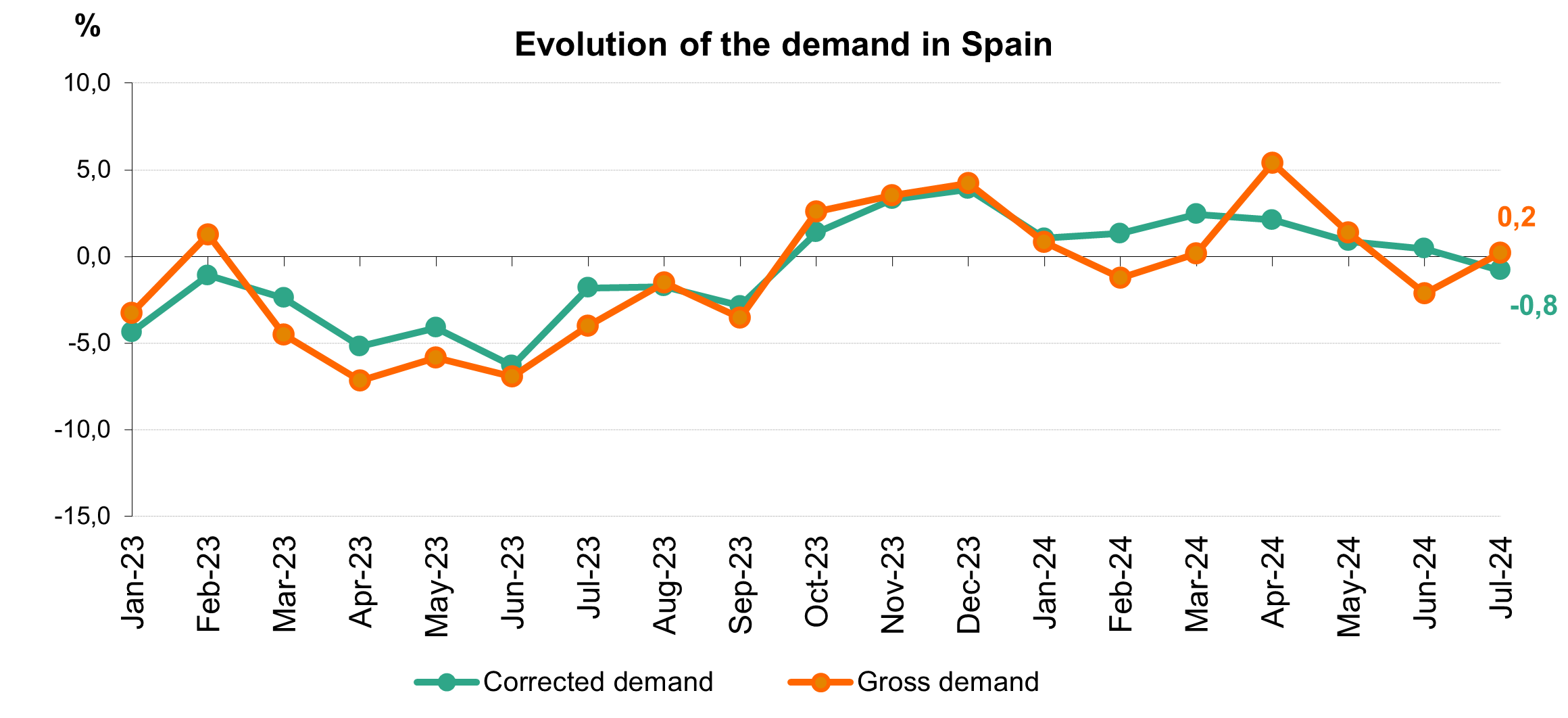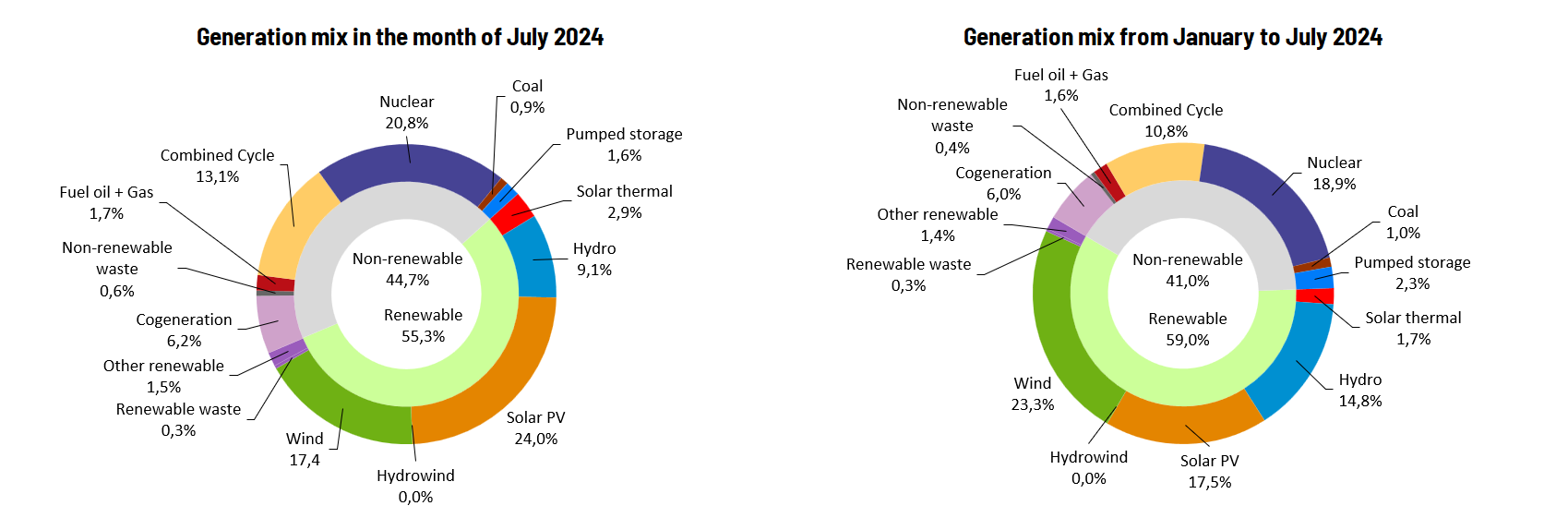For 40 years, we've been driving our country's economic and social progress. Four decades shaping Spain.
Spain's demand for electricity falls by 0.8 % in July
- For the third month in a row, solar energy leads the domestic generation mix with 24% of the total, a record high.
- Monthly production using renewable energies in Spain accounted for 55.3%, and technologies that do not emit CO2,equivalents reached 77,2%.

Domestic electricity demand fell by 0.8% in July with respect to the same month last year, after adjusting for the effects of temperature and working patterns. In gross terms, demand is estimated at 22,730 GWh, 0.2% higher than in July 2023.

From January to July 2024, Spain recorded a total demand of 143,572 GWh, 0.6% higher than in the same period in 2023. After adjusting for the effects of working patterns and temperatures, demand was 1% higher than in the same month in 2019.
This month, renewables generated 13,460 GWh, 23.2% more than in July 2023, reaching a share of 55.3% of the total, making this the third month in a row in which solar energy leads the Spanish mix, with 24% of the total. In July, this technology produced 5,840 GWh, which is 27.7% more than in July 2023, and marks a record high in monthly solar production.
It should be mentioned that on 12 July, solar beat its own daily production record with 211 GWh, a share of 25.1% of the total on that day.
According to provisional data available to date, solar led nuclear (20.8%) and wind (17.4%), in terms of technologies with the highest production in July.
With this boost from renewables, 77.2% of the electricity produced in Spain in July 2024 was free of CO2 equivalent emissions.

Demand in the Peninsula fell by 0.7%
Peninsular demand was 0.7% lower than in July 2023, after factoring in the effects of working patterns and temperatures. In gross terms, demand this month was 21,235 GWh, 0.4% higher than in the same month last year.
From January to July this year, aggregate demand in the mainland was 134,911 GWh, 0.6% higher than that recorded in 2023. After adjusting for the effects of working patterns and temperatures, demand was 1% higher than in the same period in 2019.
Mainland renewables as a whole generated 57.1% of the total in July, according to provisional data available today, which show production of 13,164 GWh, 24% more than in the same month last year. Emission-free technologies accounted for 80.3% of the total.
The mainland generation structure in July was also led by solar power, which was responsible for 24.9% of the total, producing 5,740 GWh during the month, 27.6% more than in July 2023.
The electricity system in the Balearic and Canary Islands
In the Balearic Islands, electricity demand in July was 5.3% lower than in the same month in 2023, after adjusting for the effects of working patterns and temperatures. Gross demand is estimated at 684,848 MWh, 6.8% more than in July last year. From January to July 2024, gross demand in the Balearic Islands is estimated at 3,406,406 MWh, 1.1% less than in the same period of 2023.
In terms of generation, combined cycle, which accounted for 60.7% of the energy produced in the Balearic Islands, was the leading source this month. Renewable energy generation and without CO2 equivalent emissions in the Balearic Islands accounted for 16.4% of the total. Renewable production in the Balearic Islands grew by 44.5% in July compared to the same month last year.
In addition, the underwater link between the peninsula and Majorca helped meet 30.3% of the Balearic Islands' electricity demand during the month, the highest amount of energy recorded to date.
Meanwhile, in the Canary Islands, electricity demand grew by 0.6% compared to the same month in 2023, adjusting for the effects of working patterns and temperatures. Gross demand was 770,477 MWh, representing a 1% increase. In the first seven months of 2024, demand in the Canary Islands was estimated at 5,032,216 MWh, 1.9% more than in the same period of 2023.
In terms of electricity generation in the Canary Islands, combined cycle, with 36.3% of the total, was also the leading source in July. Renewable and emission-free technologies reached a share of 28.1% of production, with wind power accounting for 22.5%.
Please see our Daily balance report for further information on the national, peninsular, Balearic Islands and Canary Islands electricity systems up to the end of July.
Downloads












